5. The Double Life of Veronique (Irene Jacob)
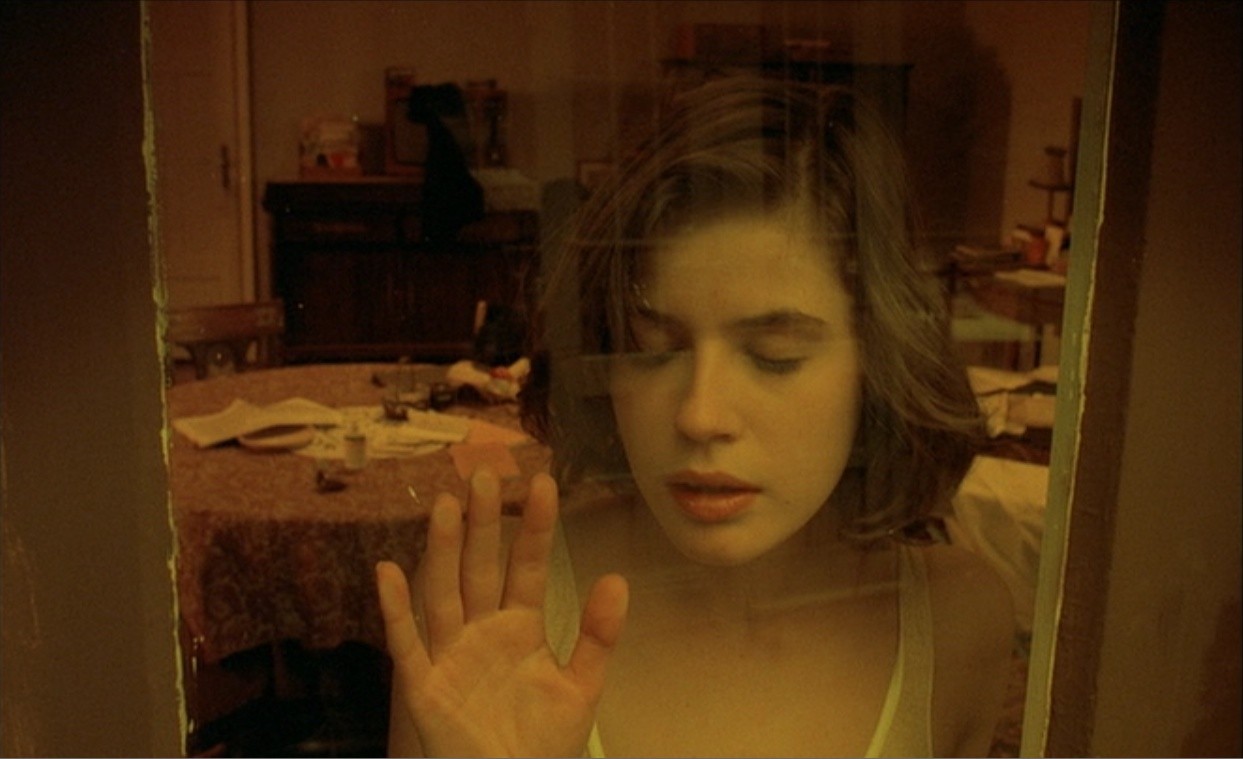
From Polish master Krzysztof Kieslowski, this enigmatic beauty of a film stars Irene Jacob as two identical characters: Weronika, a Polish choral singer, and Veronique, a French music school teacher. While the two have never met and are from different countries, the two seem to share an unexplainable connection.
When Weronika travels to Krakow to visit her aunt she spots Veronique at a protest rally in the square, but does not approach her. Things are going well for Weronika, with a new choral gig and a promising relationship, until one night as she is singing at a concert she mysteriously dies onstage.
Back in France, Veronique becomes unexplainably sad, and the the viewers notice many similarities between the two’s lives. For instance, in Veronique’s music class she teaches her students the same piece of music that Weronika was performing when she died. Veronique is then started on a bizarre mystery when she receives weird letters and empty phone calls, eventually leading to even more intrigue.
The film is typical of Kieslowski in many ways, featuring heavy use of color, broad humanistic themes and stunning imagery. The plot of Double LIfe is more abstract than most, utilizing a less straightforward narrative, instead relying on subtle imagery and symbolism in order to convey the themes of the film. Somehow, underneath all of the vision and form put forth by Kieslowski, Jacob does not get stifled, instead delivering a pair of touching, understated performances.
4. The Life and Death of Colonel Blimp (Deborah Kerr)
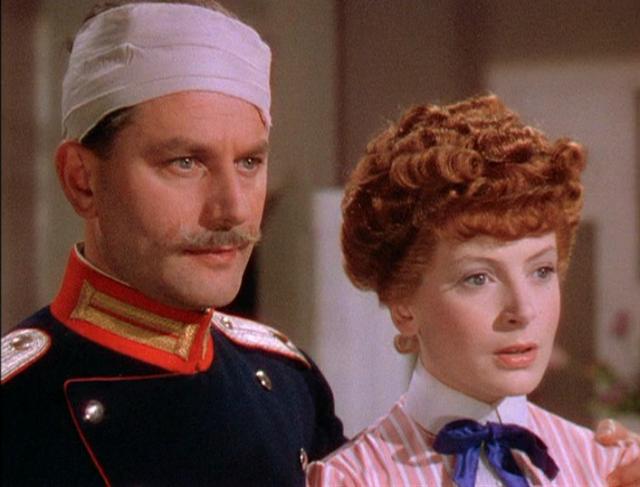
One of the great British classics, Colonel Blimp is the second product of the legendary pair of filmmakers, Michael Powell and Emeric Pressburger. Simultaneously a reverent testament as well as a comic satire of the British military, and national identity as a whole, the film explores many different emotions and aspects of rank and culture throughout the beginning of the 20th century.
Roger Livesey stars in the lead role as Clive Candy, a soldier of the British Army who served in the Boer War, World War I and was a commander of the Home Guard during World War II. Candy is nationalistic but, oftentimes, conflicted and his turmoil throughout the wars is the focus of the film. His largest burden, which continues to follow him all his life, is his past love from the Boer War, Edith, played by Deborah Kerr, who he lost to a friend.
Although, after a while, Candy accepts his loss and moves on with his life, becoming a spokesperson for the armed forces. He also meets a new girl, Barbara, who he marries right away because she looks just like Edith; unsurprisingly, Barbara is also played by Kerr. Eventually, she too passes and Candy ages on to World War II. Again, while leading the national guard, he meets another young woman Angela, again played by Kerr.
While Candy cannot act on his reawoken feelings the third time, due to the now unsurmountable age gap, the experience once again causes him to reflect on his life and his country’s role in the world. While Kerr isn’t the central character, and does not top Livesey’s brilliant performance, her strong portrayals are integral to the themes of the story and Candy’s character. Kerr’s success led to another great, and more electrifying, role in the directorial pair’s film Black Narcissus.
3. Kind Hearts and Coronets (Alec Guinness)
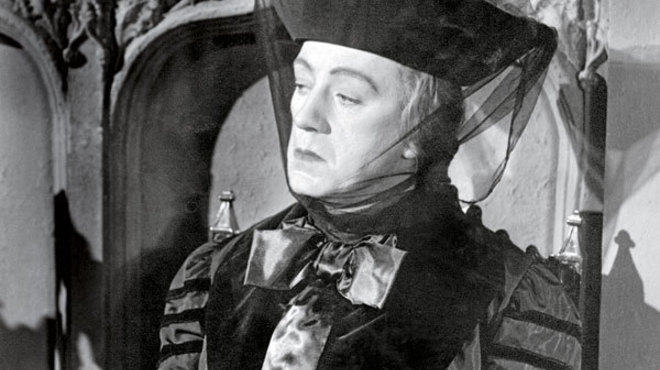
One of the great comedies of Ealing Studios, whose other films include The Ladykillers and The Lavender Hill Mob, in both of which Alec Guinness also stars, Kind Hearts and Coronets is one of the quintessential classics of British film. Dennis Price stars as Louis Mazzini, a descendant of the wealthy D’Ascoyne family, but because his mother married below her class, he and his parents were disowned by their relatives.
After his mother dies and Louis is wronged by Ascoyne D’Ascoyne, Louis vows to kill all the remaining D’Ascoyne elders, putting him in life to be sole Duke of the family. While this ambition is already appalling, it becomes even tougher when Louis discovers that there are eight in line before him who he must eliminate. Much to the pleasure of the viewer, all eight of them are played by Alec Guinness.
Guinness first appears as Ascoyne, a snob who is killed by Louis in a boat accident. Then, Louis befriends Ascoyne’s father, Lord Ascoyne, who gives him a job. Now, closer to the family, Louis sets out to eliminate the rest of the family. His other victims, all played by Guinness, include the photographer Henry, the reverend Lord Henry, the suffragette Lady Agatha, General Lord Rufus, Admiral Lord Horatio and Duke Ethelred.
After acceding the dukedom, however, Louis ironically gets arrested for a crime he didn’t commit; he is suspected in the murder of his former lover’s fiancee and, in spite, she does testifies against him. The film is a terrific example of older British humor, parodying the upper class and featuring silly characters, and while the plot and jokes are funny, Guinness is absolutely the highlight, playing a record breaking number of roles, all of them performed magnificently.
2. Monty Python and the Holy Grail (Graham Chapman, John Cleese, Terry GIlliam, Eric Idle, Terry Jones, Michael Palin)
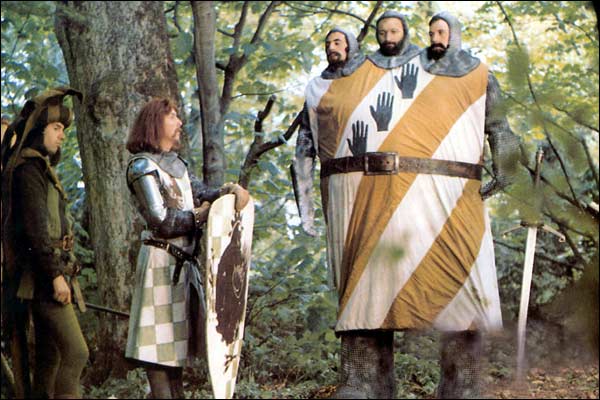
Considered by many to be one of the funniest comedies ever made, this cult classic from the British comedy troupe is one of the silliest and non-sensical, but by all accounts hilarious, mainstream comedy successes of all time. Taking the familiar lore surrounding King Arthur, his knights of the round table and their quest for the holy grail, Monty Python twist the standard events and add in idiotic side events for good measure, creative an alternative mythology that is just as memorable as the original.
The troupe, mainly the six listed above, play many roles of various size throughout the episodic film. They each star as one of the main knights, notably Chapman as King Arthur, Cleese as Sir Lancelot and Palin as Sir Galahad but they all can be seen throughout as random weirdos, often donning silly costumes or crossdressing.
The titular plot of the film, in fact, soon becomes secondary as the myriad of side quests soon distract the viewer from any linear structure and the film melts into a jumble of meta-fictional madness, at times referencing itself as a written story, calling out writers and animators, and as a movie production set in modern times.
Interspersed with the group’s now iconic illustrations, courtesy of Terry Gilliam, and the dozens of ridiculous roles, The Holy Grail is more of a surreal collection of medieval sketches than a cohesive narrative, but this does not harm the experience; the lunacy of the project makes it even more enjoyable.
1. Dr. Strangelove (Peter Sellers)
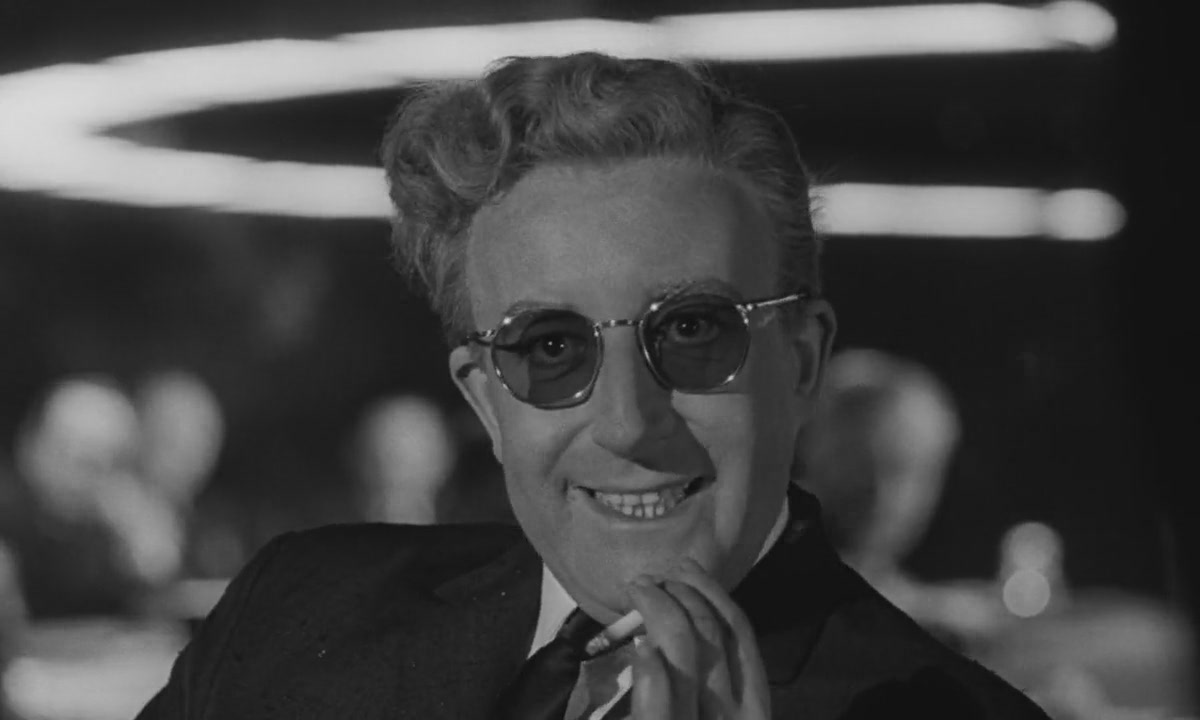
Stanley Kubrick’s comedic masterpiece and satire of the Cold War features many great performances from acting greats like George C. Scott, Sterling Hayden and character actor Slim Pickens. Upstaging all these actors, however, is Peter Sellers who, due to his previous success with Kubrick in Lolita, was given three large roles to play.
The plot of Dr Strangelove, subtitled How I Learned to Stop Worrying and Love the Bomb, unfolds after an insane nationalist General Ripper , played by Hayden, overrides the presidential authority and orders his one of his bombers to nuke Russia. Captain Mandrake, the first off Seller’s characters tries to stop him but Ripper holds him hostage and monologues about his Soviet conspiracy theory.
Back at the Pentagon, General Turgidson, played by Scott, briefs the president’s “War Room” of the attack to an audience of military officials as well as President Merkin Muffley and the former Nazi Dr. Strangelove, both of which are also played by Sellers. The group desperately tries to stop the attack and make a deal with the Soviets but they are unable to stop the world’s demise.
Although it was the studio’s idea to have Peter Sellers play multiple characters, having seen him already do so in The Mouse That Roared, Kubrick and Sellers ran with the idea. All of the three characters, Mandrake, Muffley and Strangelove, are not only quite different in personality but are all very important roles representing specific political characteristics that Kubrick uses to satirize the Cold War. Mandrake is the most normal of the three, acting as a voice of reason against the propaganda-fueled lunacy of Hayden’s character.
President Muffley and Dr. Strangelove are much more complex and unbelievable characters. The president, while well intentioned, is completely overwhelmed and relatively clueless in his position. Strangelove, sitting just across the table from the president, is much more bizarre in both appearance and actions, delivering hilarious goofball humor as well as more meaningful mocking of the government and military. In one of Kubrick’s funniest and most politically relevant films, Seller’s steals the spotlight with his masterful characterizations of the system.
Honorable Mention: Dead Ringer (Bette Davis), Enemy (Jake Gyllenhaal), Lost Highway (Patricia Arquette), There Will Be Blood (Paul Dano)
Author Bio: Matthew Benbenek is an undergraduate Mechanical Engineering student at the University of Wisconsin – Madison. He has a passion for film, music and literature and, when not watching movies, is an amateur director and violin player.